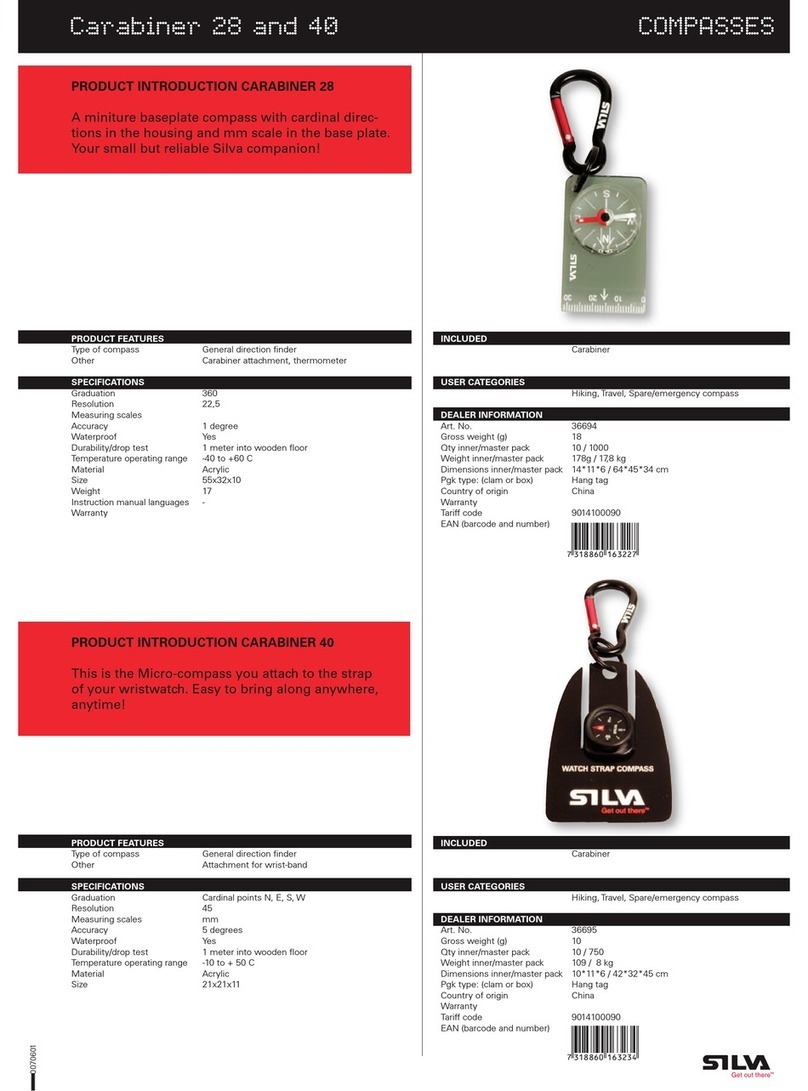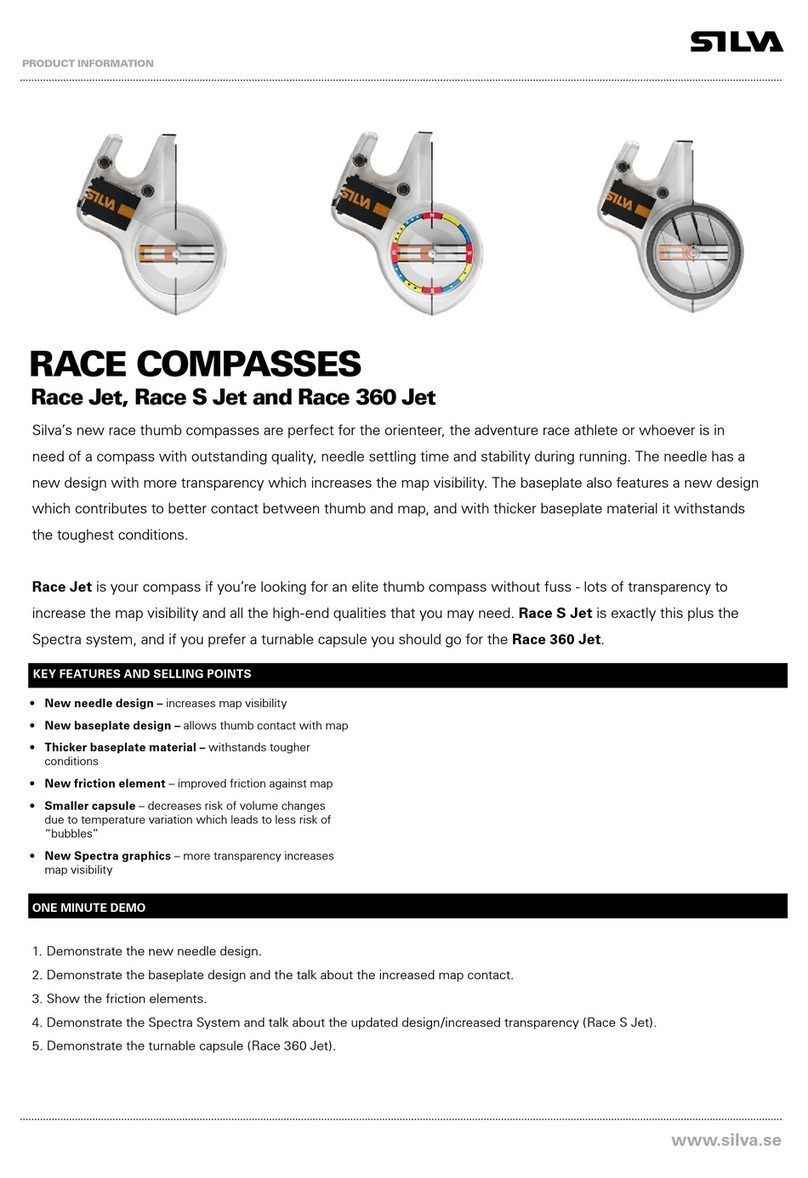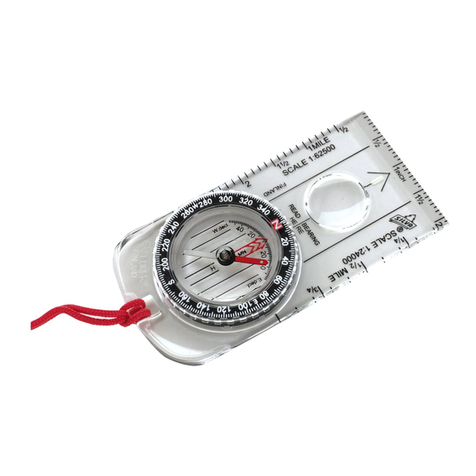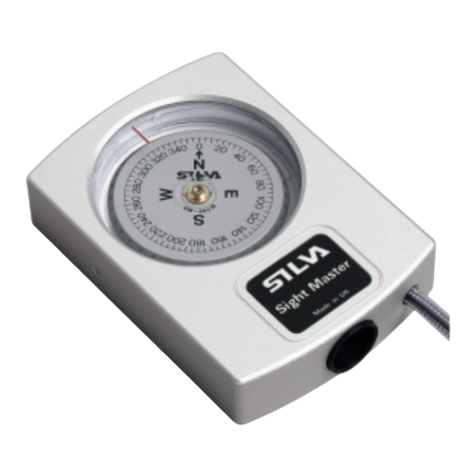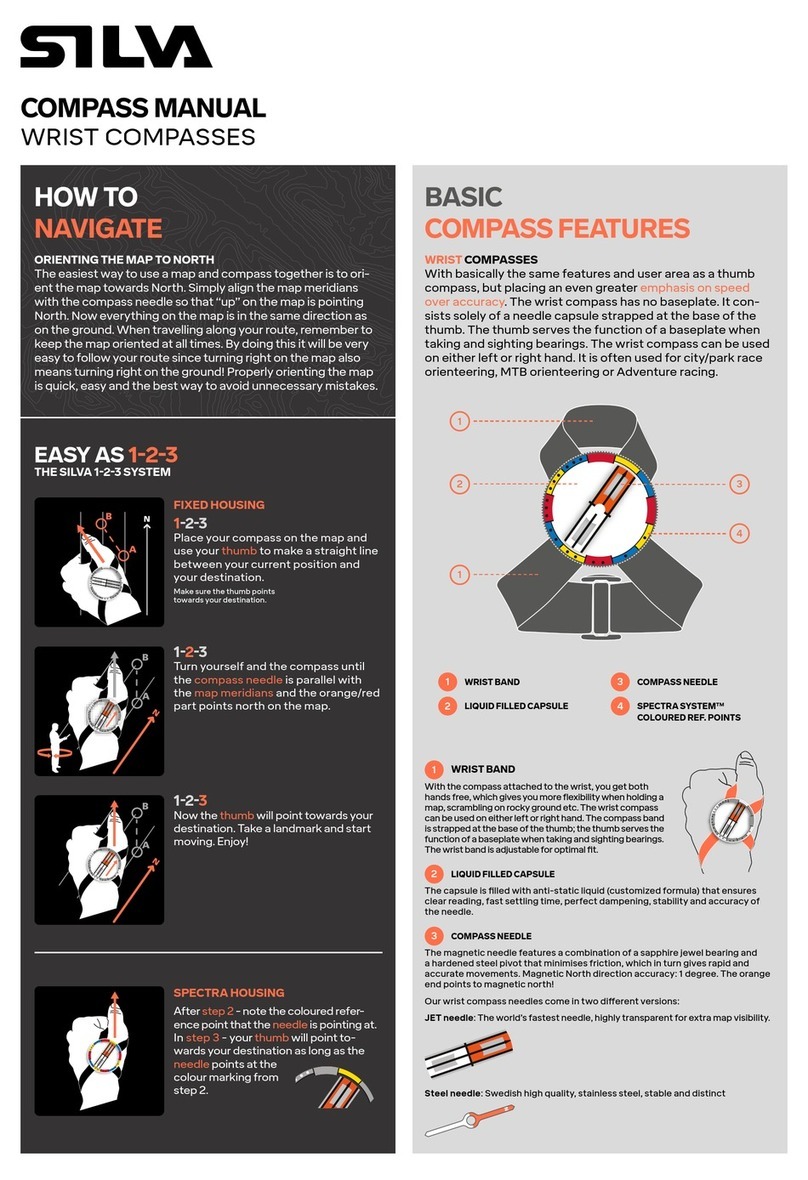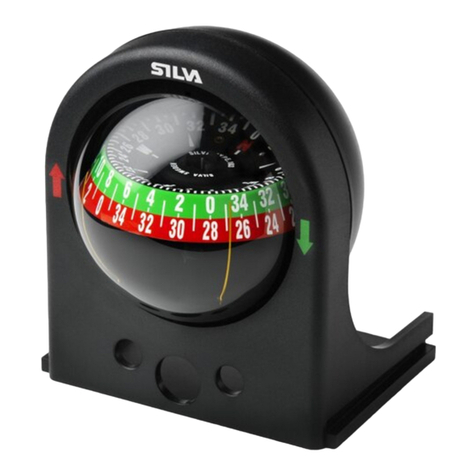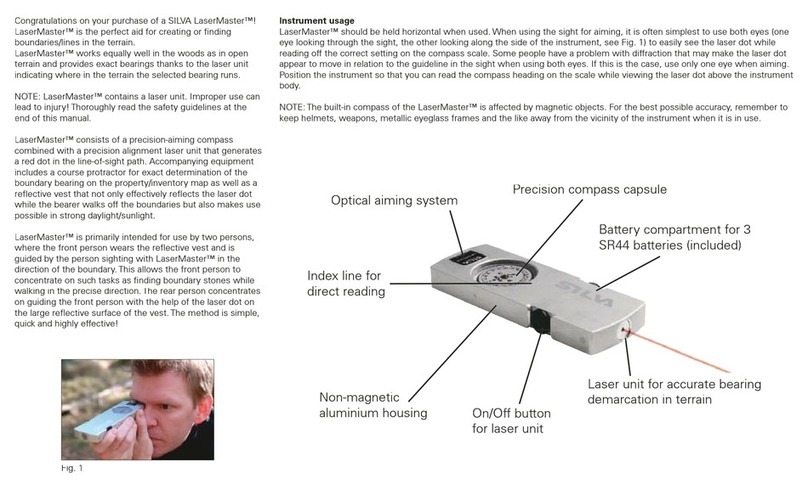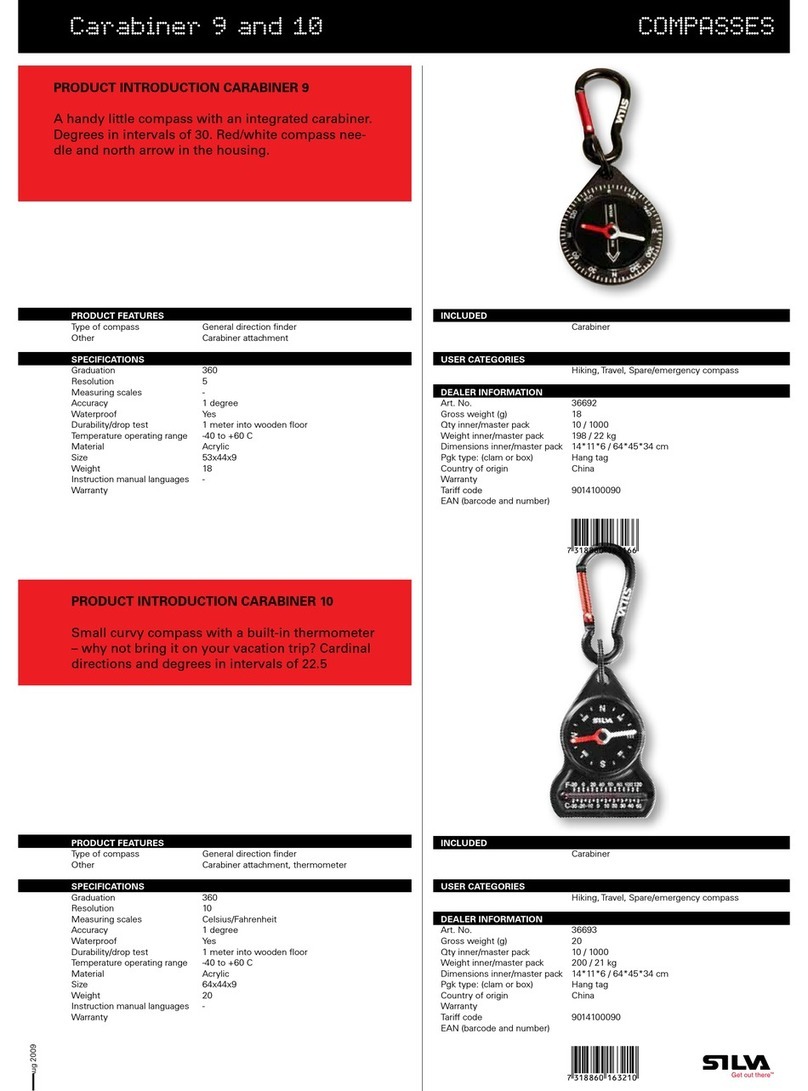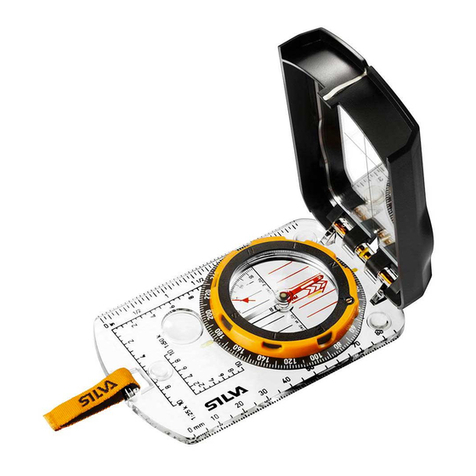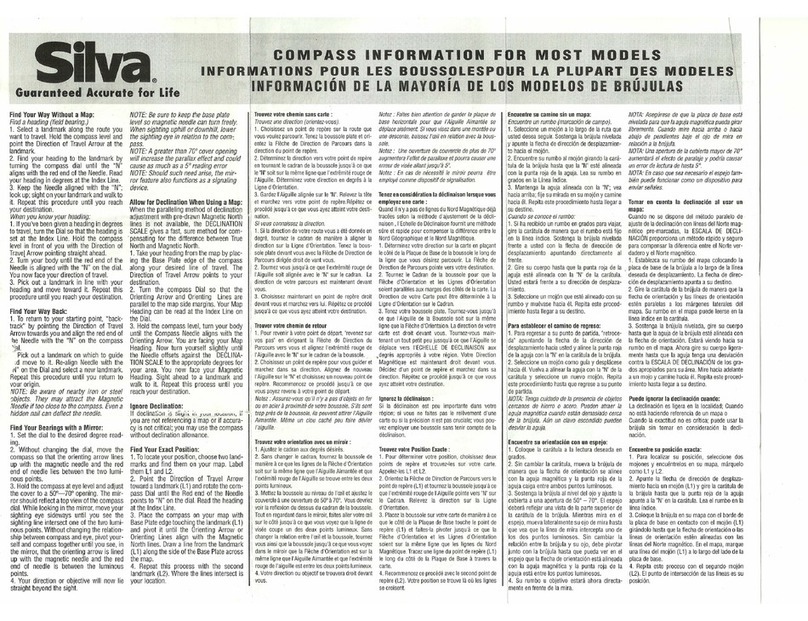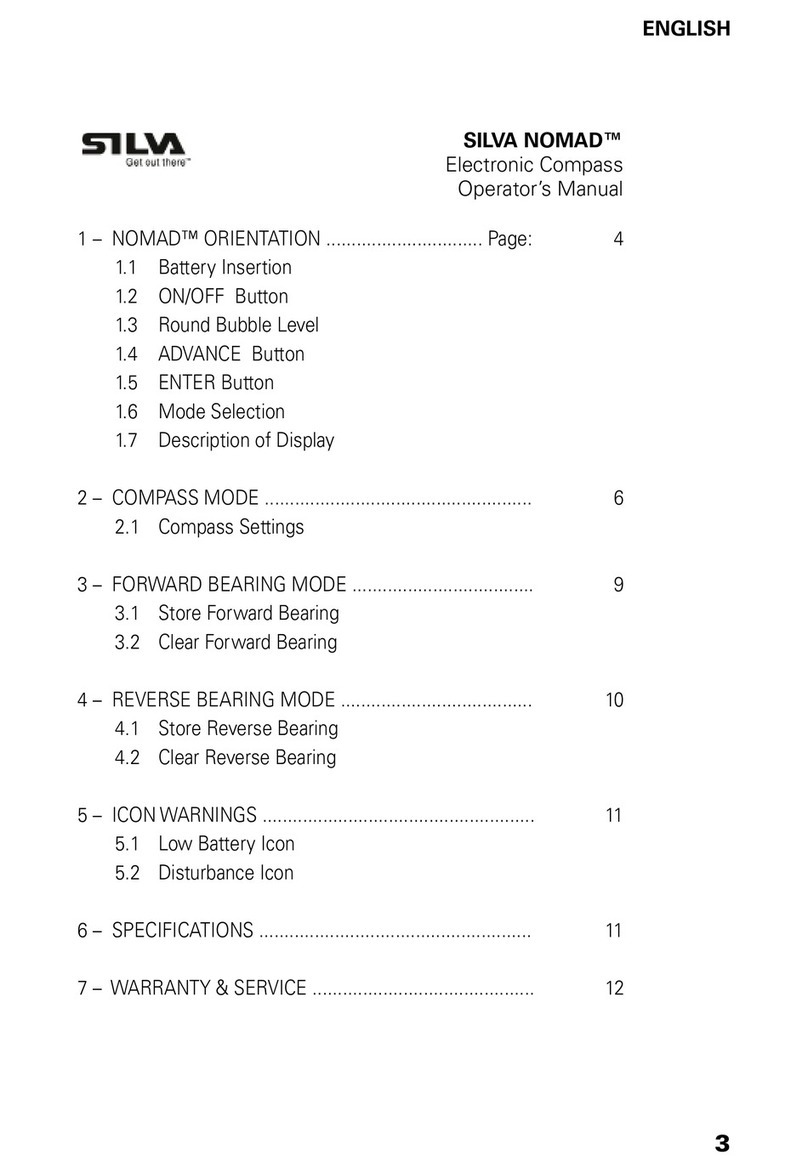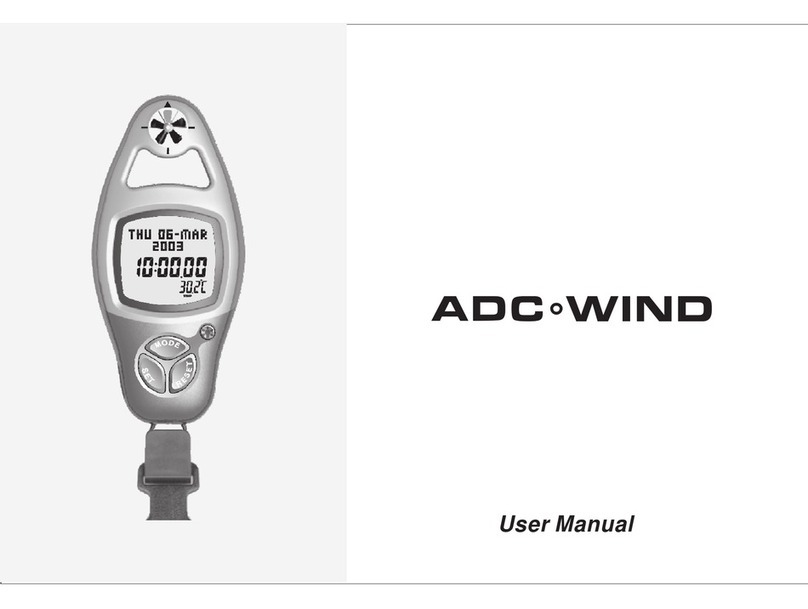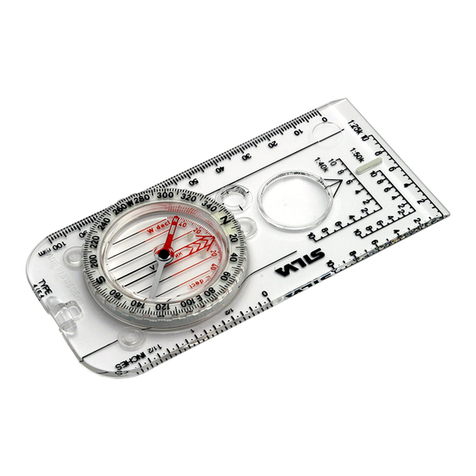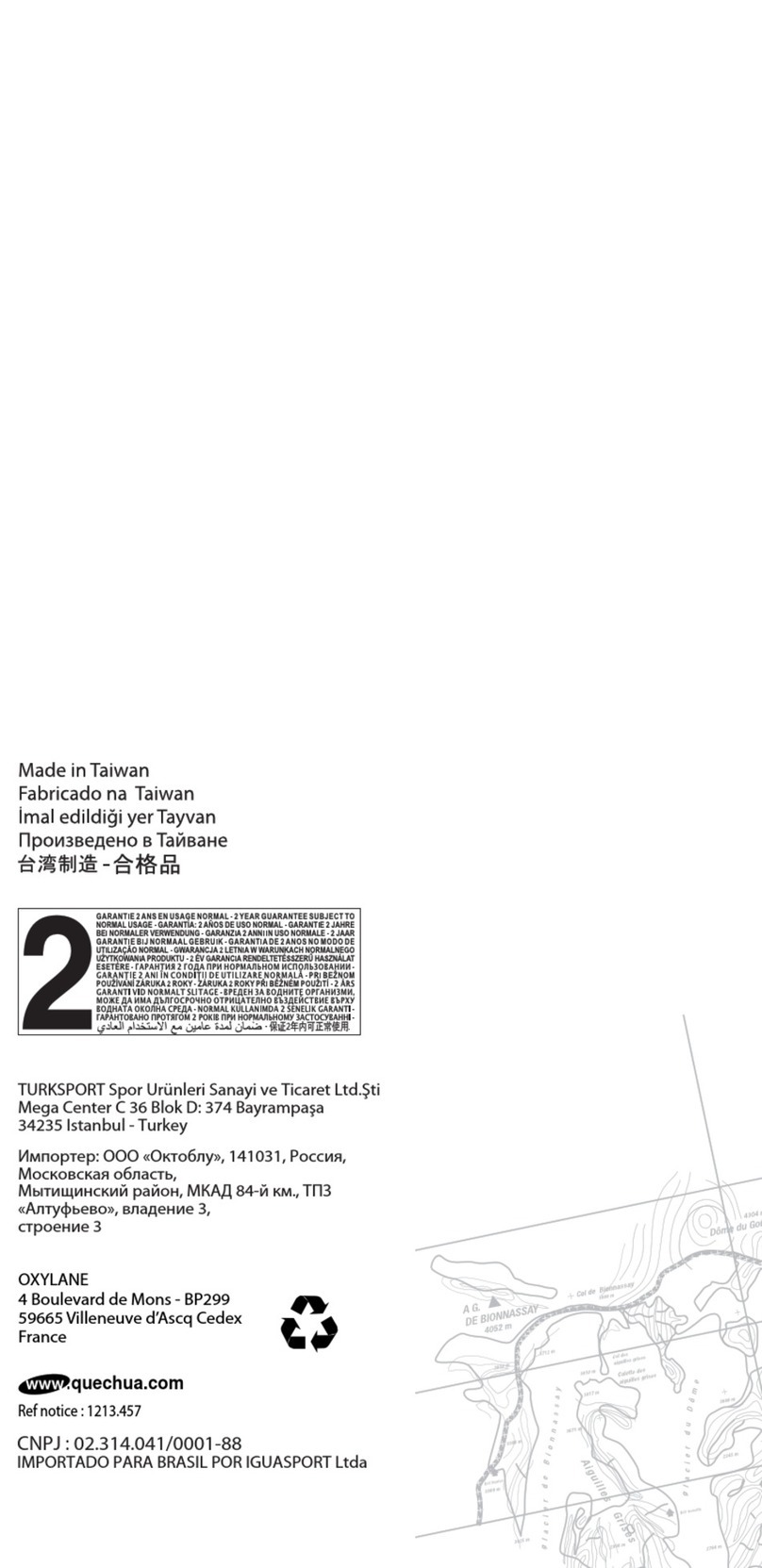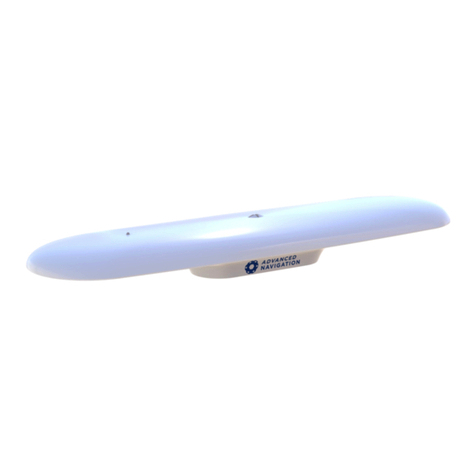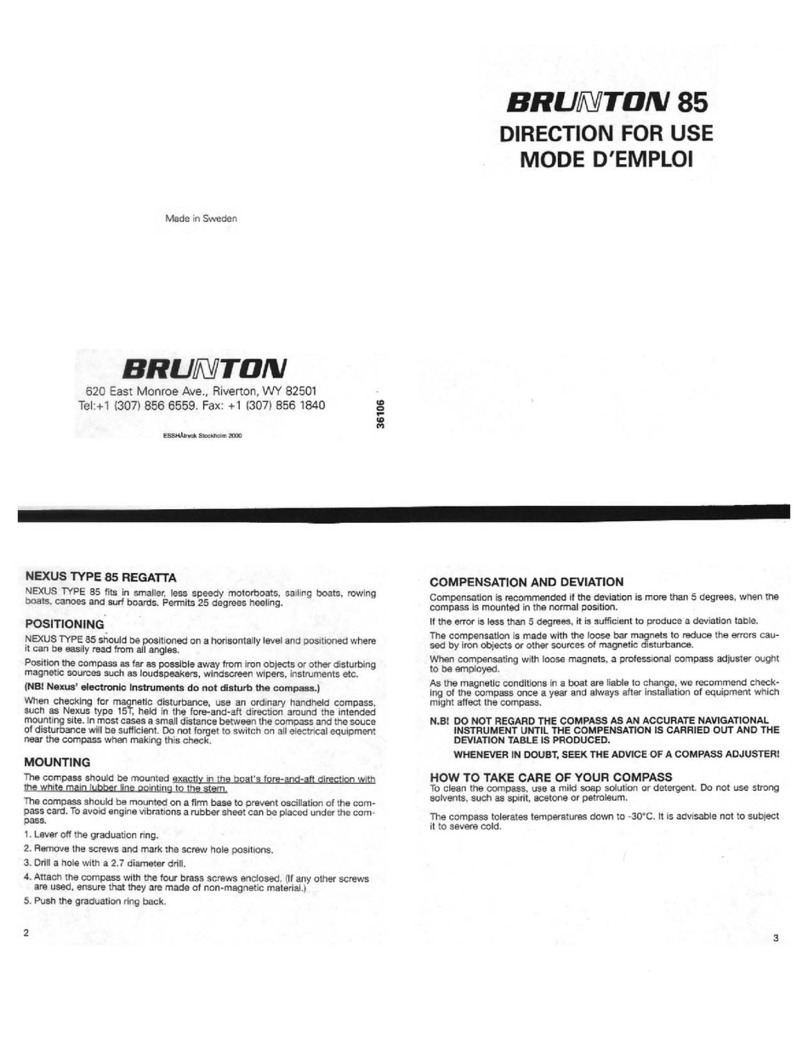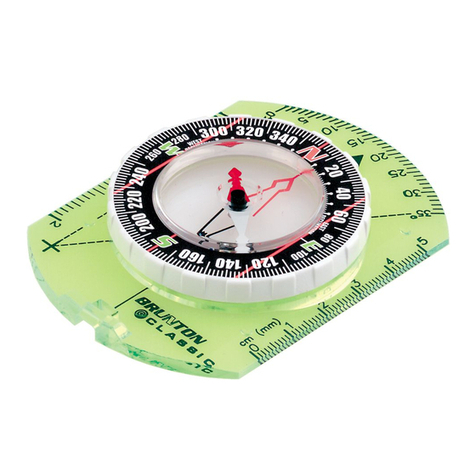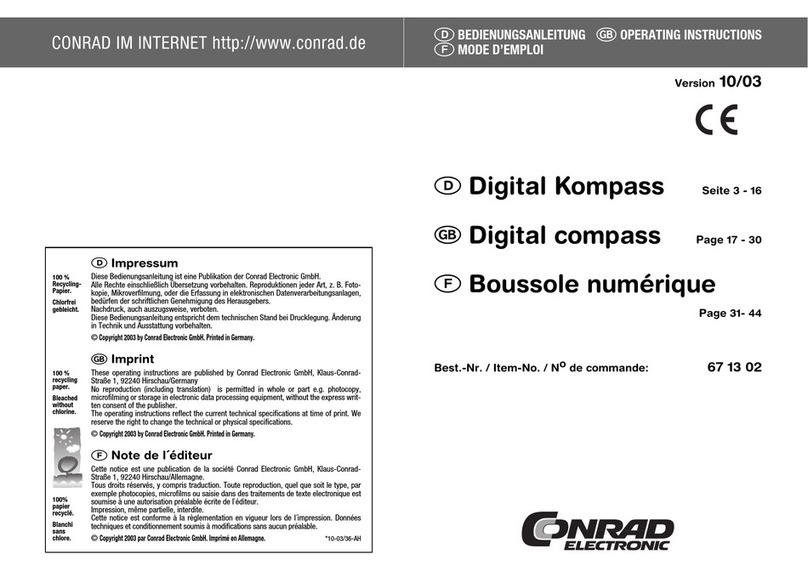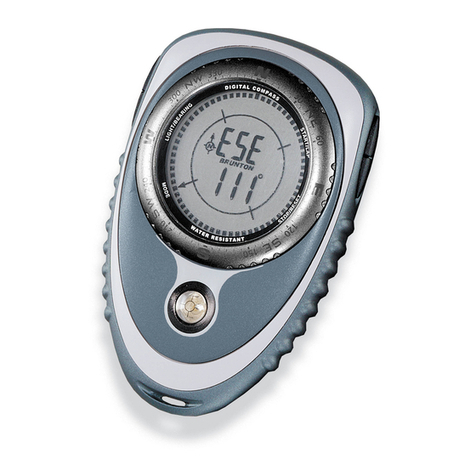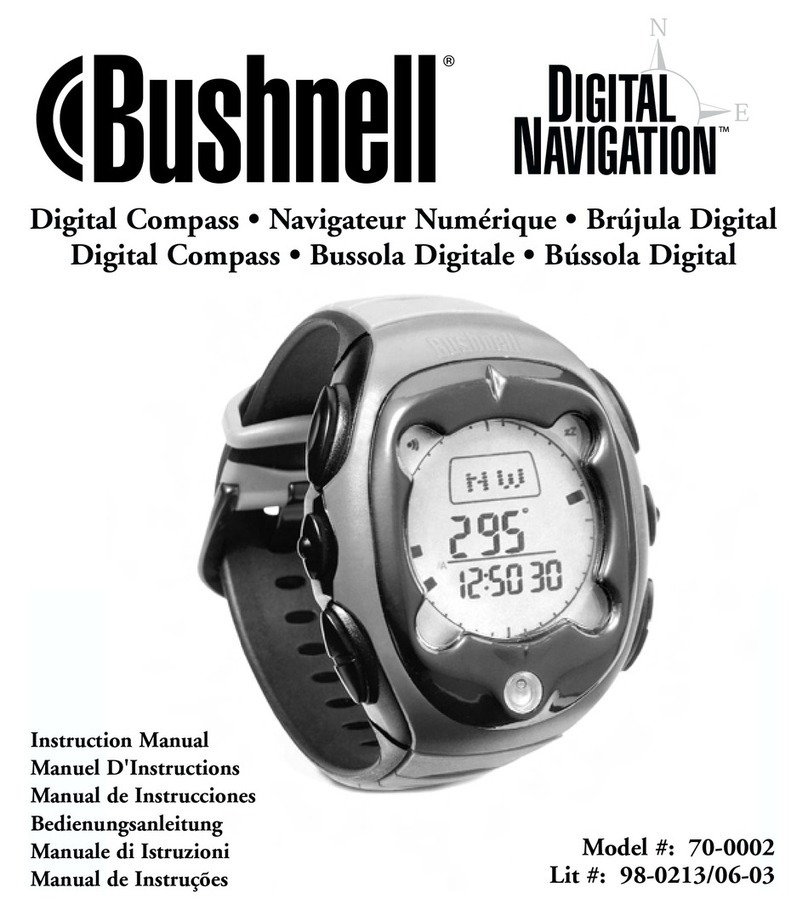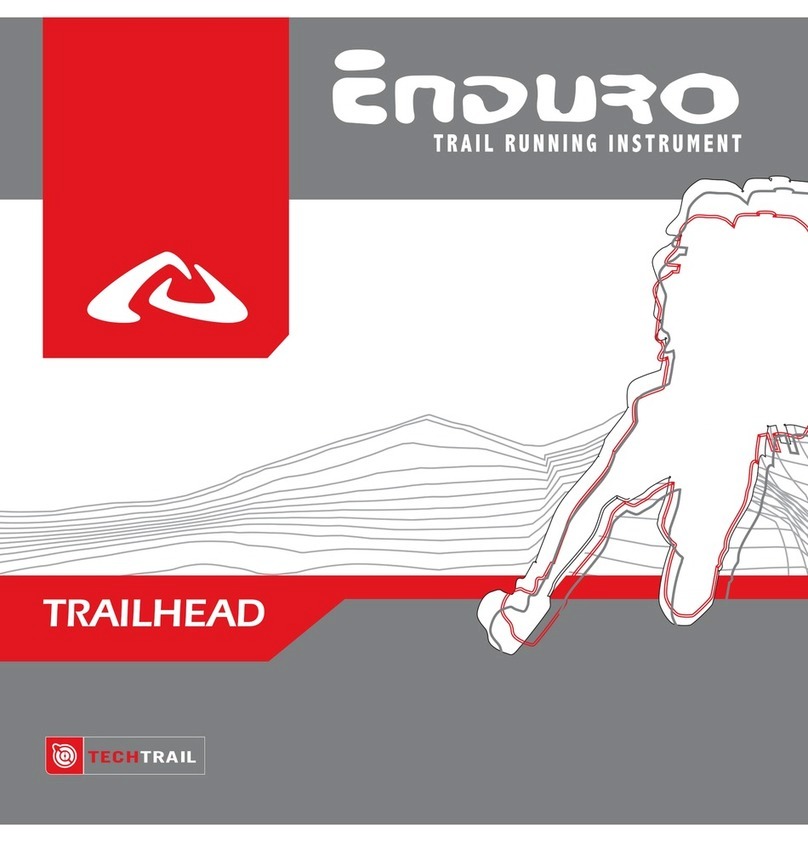4
GENERAL SUGGESTIONS
Your Silva Ranger compass may be used for finding directions with or without the
aid of the sighting mirror. LEARN BOTH WAYS.
1. When extreme accuracy required:With the sighting mirror, hold compass at eye
level with cover opened to an acute angle.
2.When quick accuracy required:With the sighting line as a direction pointer, hold
the compass at waist level with cover wide open. In either instance, the compass
must be held level enough to permit the needle to swing freely.
Always check compass function prior to using it in the field. Be aware that expos-
ing your compass to articles with iron content (a magnetic field) can cause the
red end of the needle to align with South, a condition called reverse polarity.
Something as simple as being placed next to a pair of scissors or knife for a length
of time, microwaves, high tension wires, stereo speakers, magnets, etc. can cause
this problem.
Asmall bubble may form in the liquid compass, but it has no influence on accuracy.
The appearance and disappearance of this bubble is due to changes in temperature
and atmospheric pressure. Bubbles larger than 1/4" diameter, however, should be
viewed with suspicion and probably are caused by a leaking capsule.
To increase their brilliance, expose the luminous points to bright light before use.
Protect your compass from high temperatures extremes.The heat expanded liquid
could damage the capsule.
